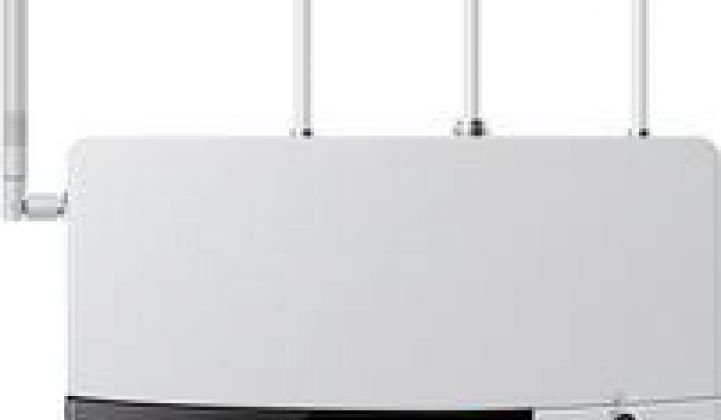It looks like rumors of Cisco’s departure from the energy-connected home space have been a bit exaggerated. On Monday, the networking giant jumped right back into the home energy fray with AT&T, announcing at CES that it has built an all-wireless control panel for the telecommunication giant’s Digital Life service.
Cisco’s control panel comes with five radios (one-way and two-way radios, Z-Wave, Wi-Fi and 3G), along with HomePlug AV wire-line capability, making it about the most communications-versatile home energy device I’ve seen. It’s also a mini-computer, capable of advanced diagnostics and power management and 24-hour backup, and using Cisco’s OSGi software to carry out many of the computations that go into sensing and controlling a home’s energy use.
Of course, it’s also connected to the cloud. Cisco’s providing the back-office provisioning and applications life-cycle management system, which connects the various cameras, smart thermostats, light controls, smoke detectors, door locks and other such home security and automation gear, and allows homeowners to monitor and control them via smartphone, tablet or PC.
In short, it’s about the most interoperable piece of hardware deployed to date for home automation -- which brings up the question of how much it costs. Cisco and AT&T didn’t reveal pricing details for the device or the Digital Life service, though AT&T said it plans to launch it in eight U.S. markets in March, with up to 50 additional market rollouts planned in 2013.
AT&T is a bit late to the party here. Verizon has been offering home automation and security devices to its FiOS broadband internet customers since October 2011, and Comcast’s Xfinity home automation service launched in mid-2011 and has been expanding to new markets ever since.
Home security companies such as ADT are also getting into the business, though their customers tend to view energy savings as an afterthought to safety. Alarm.com raised $136 million in VC for its connected home services in July, and Vivint, a home automation company that has been adding third-party-financed solar to its offerings, was bought by private equity firm Blackstone Group for $2 billion late last year.
As for Cisco, it de-prioritized home energy management back in 2011 to refocus on commercial buildings via its EnergyWise line of business. That technology, based on its 2009 acquisition of building energy software company Richards-Zeta Building Intelligence, has mostly been applied in data centers to date.
The home requires a much different approach than the instrumented and managed commercial building sector, however. Cisco has long talked about the need to distribute much of the intelligence for “endpoints” on the grid like homes and offices, to keep network traffic to a minimum and allow each home to more or less do the right thing on its own most of the time -- but that requires a good deal of computing power for in-home devices.
At the same time, companies like EcoFactor, Nest, Energate, Silver Spring Networks, Honeywell and a plethora of others are using cloud computing to do much of the heavy IT lifting, so to speak. That model collects data from semi-smart devices and multiple other sources, crunches it to figure out what the home devices should do, and then sends the commands back. No doubt Cisco will be applying both methods in its partnership with AT&T.
At the same time, Cisco has taken a lead in smart grid, networking everything from distribution substations to smart meters. But its Monday announcement didn’t make any connection between its smart grid work and the AT&T project -- which makes sense, since it’s a completely different channel to the home.
Few utilities have offered up the same kind of home automation gadgetry as the big telcos and home security providers have, though some are starting to enable third-party devices that connect to smart meters, demand response signals and other utility systems.



